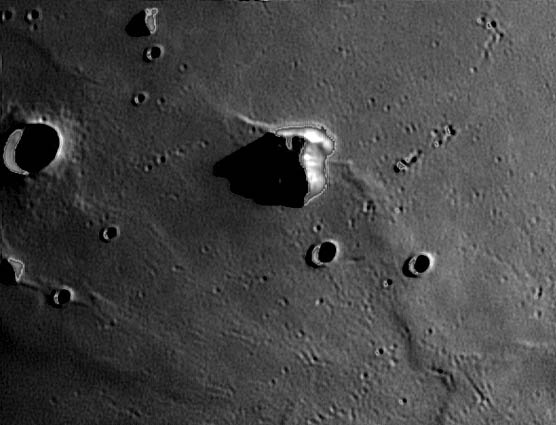Difference between revisions of "February 10, 2005"
| Line 47: | Line 47: | ||
[http://www.uky.edu/~holler/msc/data_input/heightof.htm Calculating the Height of Piton] | [http://www.uky.edu/~holler/msc/data_input/heightof.htm Calculating the Height of Piton] | ||
</p> | </p> | ||
| − | <p | + | <p><b>Yesterday's LPOD:</b> [[February 9, 2005|Postcard from the Moon]] </p> |
| + | <p><b>Tomorrow's LPOD:</b> [[February 11, 2005|Seeing Double at Capuanus]] </p> | ||
</tr> | </tr> | ||
</table> | </table> | ||
| Line 74: | Line 75: | ||
===COMMENTS?=== | ===COMMENTS?=== | ||
Register, and click on the <b>Discussion</b> tab at the top of the page. | Register, and click on the <b>Discussion</b> tab at the top of the page. | ||
| + | <hr> | ||
| + | <!-- | ||
| + | You can support LPOD when you buy any book from Amazon thru [[Support_ LPOD|LPOD]]! | ||
| + | --> | ||
| + | <span style="font-size:88%"> | ||
| + | <center> | ||
| + | Contributions to http://www2.lpod.org/ are licensed under a Creative Commons Attribution No-Derivative-Works Non-Commercial 3.0 License. [http://www.creativecommons.org/licenses/by-nc-nd/3.0 http://www.wikispaces.com/i/creativecommons/by-nc-nd_3.0_80x15.png]<br> | ||
| + | </center> | ||
| + | </span> | ||
Revision as of 14:17, 1 February 2015
Peaky Piton
Image Credit: Mike Wirths |
|
Peaky Piton In some of the speculative paintings of the Moon from the 1950s and earlier, Mount Piton, Pico and similar isolated peaks were often depicted as soaring spires with long shadows. It was the low-angle shadows that fooled them, for Piton is a stubby little peak only 2.3 km high with a base about 25 km across. As Mike’s image shows, Piton has variations in brightness similar to bands on the inner walls of impact craters. The dark hues are probably the space-weathered tone of the mountain, and the bright bands are fresh material exposed by small landslides. The surrounding surface of Mare Imbrium is pockmarked with a number of craters. Some are random impacts, but the fact that many are in short lines, pairs or clusters suggests that they may be secondary craters. Technical Details: Related Links: Yesterday's LPOD: Postcard from the Moon Tomorrow's LPOD: Seeing Double at Capuanus |
|
Author & Editor: Technical Consultant: Contact Translator: A service of: |
COMMENTS?
Register, and click on the Discussion tab at the top of the page.
Contributions to http://www2.lpod.org/ are licensed under a Creative Commons Attribution No-Derivative-Works Non-Commercial 3.0 License. 




